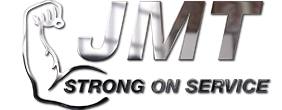How Do I Install and Set Up a Press Brake?
If you’re in the metal fabrication business there is a good chance that you are like me and get excited about a new piece of equipment arriving in the shop. A new press brake always creates excitement and “buzz” among the staff once it arrives, either because it is needed to replace a broken or older press brake that is no longer producing good parts, or outsourcing has become expensive and frustrating to the point of justifying a new press brake purchase. Your business may also have picked up a new job that requires parts that can only be produced in a press brake.
Whatever the reason for the purchase there are few things that can be a quicker “buzz kill” than a press brake machine having problems right off the bat! Here are a few tips to avoid dampening the excitement of a new brake because the machine doesn’t operate initially because of poor installation by your shop staff.
First, the machine must be level. When I say level I mean there is no twist to the machine and it is on a decent footing. Once you have the press brake level it should be anchored to the floor. The pad that you place your brake on should be as level as possible. The thickness of the concrete is determined by weight and size of the press brake. That information can be obtained in a setting plan from the company you purchase the press brake from. I have also seen nice installations done on thick metal foot pads or even set on an entire sheet of steel then anchored.
Once you have the press brake set, level and anchored to the floor. It is time to call in a qualified electrician to double (or triple) check the brake for the correct electrical power. Only when the electrician is confident on voltage and phase can he hard wire the machine to the box.
The press brake machine needs to be filled with oil. The correct viscosity and volume of oil to be used should be in the manual provided with the machine. If not, check with the company you purchased the press brake from. It is common for JMT to use Mobil AW32 oil.
At some point before starting the press brake, a good general cleaning needs to be performed on it. The machine has been shipped — and most likely a long way — so there is a good chance it is dirty and possibly covered in Cosmoline by the factory before its initial loading. During this cleaning process your staff should be looking for loose or possibly broken parts that were not noticed when the press brake was signed for on delivery.
Once these tasks have been completed the press brake can be calibrated. Performing the above tasks as thoroughly as possible can save a lot of time and frustration during the initial calibration and startup of the new brake.
A complete set of manuals should be included with the press brake, either in printed form or on a CD-ROM for viewing on a personal computer (manuals are commonly stashed in the electrical cabinets of machine tools). Inside the manuals should be most — if not all — of the above information. Also in the manual is a recommended schedule for daily, weekly and annual maintenance that should be implemented in your company’s routine maintenance program.
Please start off on the right foot by taking the time and care to properly set and maintain your new press brake. It will pay off if you do!
JMT offers professional installation services as an option with the purchase of a new press brake. Our factory trained technicians will come to your site, perform the physical installation and calibrate your new press brake. They will also test the machine using your production parts and train your staff on operating the press brake.


